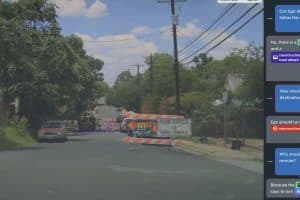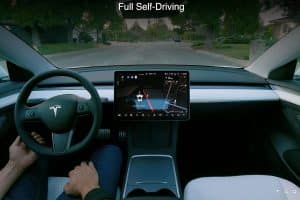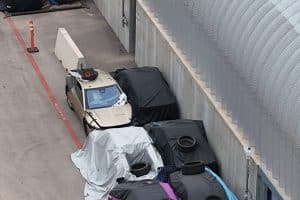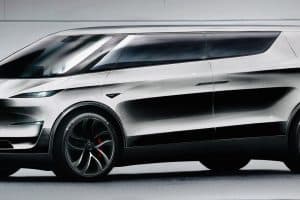Key Takeaways
- Former Waymo CEO, John Krafcik, expresses skepticism about Tesla’s readiness for a robotaxi launch and suggests potential for “faking” the service.
- Krafcik criticizes Tesla’s reliance solely on cameras for its autonomous vehicles, pointing out the industry’s preference for additional sensors like radar and lidar.
- The Cybercab prototype by Tesla is critiqued for its impractical design for a robotaxi, emphasizing the importance of accessibility and sensor placement.
- Challenges in highway environments are highlighted by Krafcik, stressing the complexity of autonomous operations beyond urban settings.
- Tesla plans to initiate a geo-fenced, teleoperated robotaxi service in Austin, displaying a limited approach compared to its longstanding promises.
- Aigars Mahinovs, a commenter, reflects on Tesla’s “fake it till you make it” strategy, echoing concerns about the authenticity of Tesla’s robotaxi claims.
Tesla’s ambitious push towards launching a fully autonomous robotaxi service has captured the imagination of tech enthusiasts and industry experts alike. However, not everyone is convinced that the future of driven-by-machine transportation is as close as Tesla claims. In this article, we dive deep into the skepticism surrounding Tesla’s robotaxi plans, drawing insights from various industry experts, including former Waymo CEO John Krafcik.
The Promised Future of Tesla’s Robotaxi
Tesla has long touted its vision of a self-driving future, promising a fully autonomous ride-hailing service. As part of this plan, Tesla’s Cybercab aims to revolutionize urban transportation by eliminating the need for human drivers. However, as the anticipated launch date approaches, experts like Krafcik raise crucial questions about Tesla’s readiness to deliver on its promises.
John Krafcik’s Skepticism: A Closer Look
John Krafcik brings a wealth of experience to the table, having led Waymo—a leader in self-driving technology—through significant milestones. He is not alone in expressing doubts about Tesla’s preparedness for a successful robotaxi launch. His primary concerns include:
- Skepticism about Sensor Choices: Krafcik criticizes Tesla’s reliance solely on cameras, while the broader industry tends to incorporate radars and lidars for more comprehensive perception capabilities in autonomous vehicles.
- Design Flaws in Cybercab Prototype: The Cybercab’s coupe-like design is impractical for a public-facing robotaxi, according to Krafcik. The design limits accessibility and raises issues about the placement and maintenance of critical sensors.
- Complexity of Highway Operations: Autonomous driving on highways presents unique challenges. Krafcik highlights that the less frequent but potentially perilous obstacles on highways demand robust solutions—something that Tesla’s current approach might lack.
Tesla’s Approach: Innovation or Overreach?
Tesla’s plan to launch a geo-fenced, teleoperated service in Austin represents a significant deviation from its broader vision of unsupervised, fully autonomous driving. This interim solution draws comparisons to Waymo’s more cautious and methodical approach, which has been widely acknowledged for its safety and reliability.
Aigars Mahinovs’ Perspective
The sentiment that Tesla might be stretching the truth is echoed by commenters like Aigars Mahinovs. He highlights Tesla’s “fake it till you make it” strategy—an approach where initial overpromising is eventually backed by innovation through significant engineering efforts. However, this raises concerns if Tesla can meet its ambitious timelines and expectations.
The Broader Implications for the Autonomous Vehicle Industry
The skepticism surrounding Tesla’s robotaxi plan is not just about Tesla itself but has implications for the entire industry. The reliance on advanced sensors, the vehicle design for accessibility, and the technological challenges of autonomous highway driving are issues that any company venturing into autonomous transport must navigate effectively.
Key Takeaways
- Diverse Sensor Usage: The debate over the sufficiency of camera-only systems versus a combination of sensor technologies continues to shape the strategies of autonomous vehicle development.
- Design Considerations: Vehicle designs need to be passenger-friendly and conducive to optimal sensor placement for effective operation.
- Highway Complexity: Highway challenges necessitate advanced solutions in perception and path planning, an area where many companies, including Tesla, are still evolving.
Tesla’s aspirations for its robotaxi service reflect its broader strategy to lead in the autonomous vehicle space. However, as experts like John Krafcik point out, the path to this future is fraught with challenges, both in technology and practicality. As the industry advances, these discussions underscore the importance of a multi-faceted approach, balancing innovation with realistic expectations and safety considerations.





